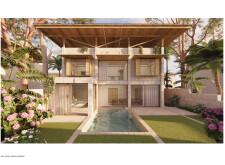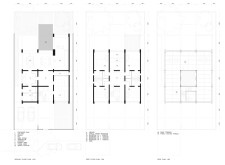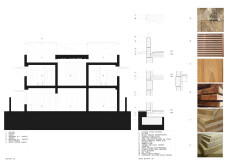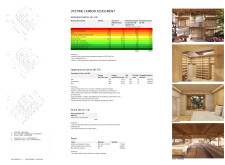5 key facts about this project
### Project Overview
This contemporary villa is strategically positioned in a lush tropical environment, designed to coexist with its natural surroundings. The intent is to create a sustainable living space that emphasizes a harmonious relationship with the landscape. The project utilizes innovative materiality and design practices, as evidenced by detailed floor plans, sections, and carbon assessment data that collectively promote an environmentally conscious lifestyle.
### Spatial Configuration and User Interaction
The villa's architectural composition includes large windows and sliding doors, facilitating ample natural light and offering expansive views of the verdant landscape. The open floor plan supports fluid circulation between communal areas, fostering social interaction while maintaining designated private spaces for relaxation. Key features such as an entrance hall, living areas, a library, and integrated water features further enrich the user experience, creating an ambiance of tranquility throughout the premises.
### Material Selection and Sustainability
Emphasizing sustainable design, the selection of materials is integral to the project’s ethos. Fluaramic stone provides robust foundations with a natural aesthetic, while reinforced concrete ensures structural integrity. Wood flooring adds warmth and connects the interior to the surrounding environment, complemented by wood-fiber insulation that enhances energy efficiency. Large glass panels optimize transparency and contribute to passive temperature control, while perforated shutters serve multiple functions, including glare reduction, privacy enhancement, and airflow management.
The villa also adopts advanced sustainability measures, with a projected **net negative carbon** output achieved through innovative technologies and design choices. A comprehensive carbon assessment indicates a total embodied carbon of **1051 kgCO₂e/m²** and optimized energy consumption of **120 kWh/m²/year**, underscoring the integration of eco-friendly practices in its design. Life cycle considerations ensure that materials can be repurposed or recycled, further minimizing environmental impact.






















































